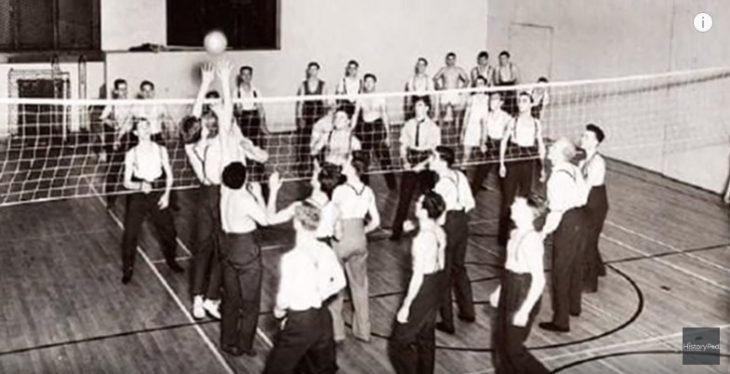
Word of the Day: Widdershins
Today’s word of the day, thanks to Julia McCoy of ExpressWriters, is widdershins, an adverb meaning “in a direction contrary to the natural one, especially contrary to the apparent course of the sun or counterclockwise: considered as unlucky or causing disaster” (https://www.dictionary.com/browse/widdershins?s=t). McCoy writes, “This is another way to say something is moving counter-clockwise or something is moving in the wrong direction. It is a much more fun way to say counter-clockwise and is most likely something you heard one of your grandparents or great-grandparents say. Many people do still use it in many poems and newly published books” (https://expresswriters.com/34-craziest-words-english/).
According to www.etymonline.com, the word enters the English language around the “1510s, chiefly Scottish, originally ‘contrary to the course of the sun or a clock’ (movement in this direction being considered unlucky), probably from Middle Low German weddersinnes, literally ‘against the way’ (i.e. ‘in the opposite direction’), from widersinnen ‘to go against,’ from wider ‘against’ (see with) + sinnen ‘to travel, go,’ from Old High German sinnen, related to sind ‘journey’ (see send).”
In looking at the etymology, you might be wondering what happened to the word with: Doesn’t it mean “accompanying” or “accompanied by”? Well, that word originally meant “against,” as www.etymonline.com tells us: “Old English wið ‘against, opposite, from, toward, by, near,’ a shortened form related to wiðer, from Proto-Germanic *withro– ‘against’…, from PIE *wi-tero-, literally ‘more apart,’ suffixed form of *wi– ‘separation.’” What happened to it? “Sense shifted in Middle English to denote association, combination, and union, partly by influence of Old Norse vidh, and also perhaps by Latin cum ‘with’ (as in pugnare cum ‘fight with’). In this sense, it replaced Old English mid ‘with,’ which survives only as a prefix (as in midwife). Original sense of ‘against, in opposition’ is retained in compounds such as withhold, withdraw, withstand.”
Many Americans know about James Naismith, who in 1891 invented the sport of basketball. Naismith worked for the Young Men’s Christian Association (YMCA), and he was charged by the director of the Y where he was working with creating a sport that would give the young men in his charge something athletic to do so that they wouldn’t quarrel during the winter, when going outside to play sports was impossible. Naismith used peach baskets and a soccer ball and created basketball.
But few Americans know about Naismith’s friend, William G. Morgan. Morgan was younger than Naismith, but he also studied at the YMCA’s training facility (later Springfield College). Morgan was working at the Holyoke, MA, YMCA, when he noticed that some of his members were not all that comfortable with basketball. It required a lot of running up and down the court, and despite Naismith’s rules designed to removed physical contact, it still had a good bit of contact. Older members, and some less physically adept members, struggled with basketball.
Morgan probably knew that Naismith had considered other popular sports when he was dreaming up basketball, sports like soccer, rugby, football, lacrosse, and others. So Morgan thought about some of the sports that were less likely to lead to physical contact, sports like tennis, badminton, and handball, and thought about how to adopt the principles of physical training that he had learned into a new sport.
He decided that he would place two teams (initially of 5) on each side of a net, and that the object would be to get a ball to the other side of the net. The net was initially 6’6” high, and the playing space was 25’ by 50’, small enough to fit inside any gymnasium of the day. Because the teams were separated by the net, there was little chance of physical contact.
The hardest part of the process was the ball. He decided that the basketball, invented by Spalding to replace the soccer ball initially used by Naismith, was too heavy for his new game. He went to the Spalding company, and a young designer named Dale Callahan came up with the perfect ball for the new sport.
In 1895, Morgan introduced his new game to the directors of physical education for the YMCA and the organization’s home in Springfield, MA. Dr. Luther Halsey Gulick, who was the director of the training school in Springfield, was so taken with the game that he asked Morgan to introduce the game to the school.
On February 9, 1895, Morgan introduced volleyball. It was a hit. The only problem that any of the observers seemed to notice was the name. Morgan called in “Mintonette,” perhaps because he initially used a badminton net and took some of his ideas from the game of badminton. But Professor Alfred T. Halstead felt that the name just wasn’t right. It may have seemed widdershins to the athletic nature of the game. So he suggested a new name.
And the world’s second most popular team sport, volleyball, was created.
The image is a screen grab from a YouTube video put out by HistoryPod. You can find the video at https://www.youtube.com/watch?v=EclLnVJ1rIw.